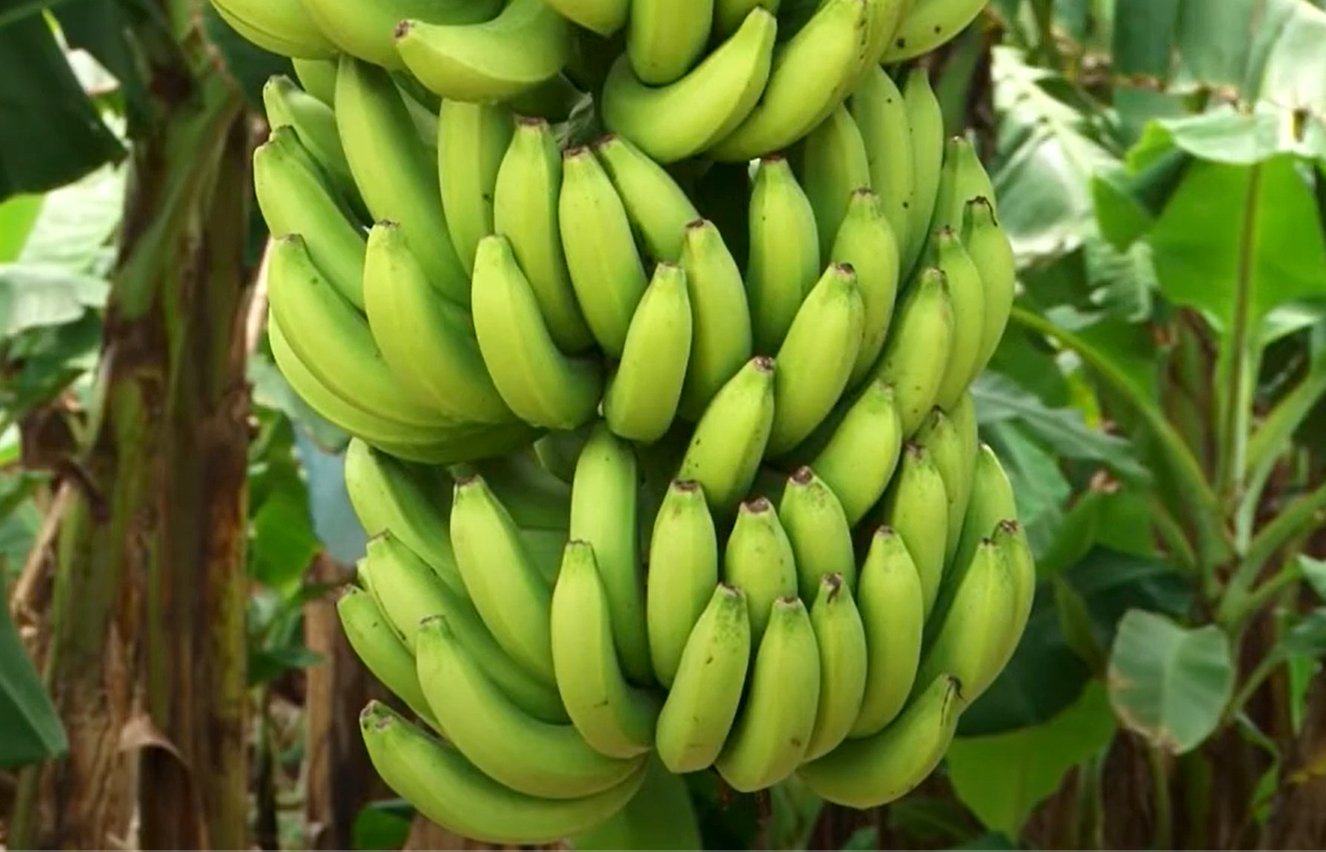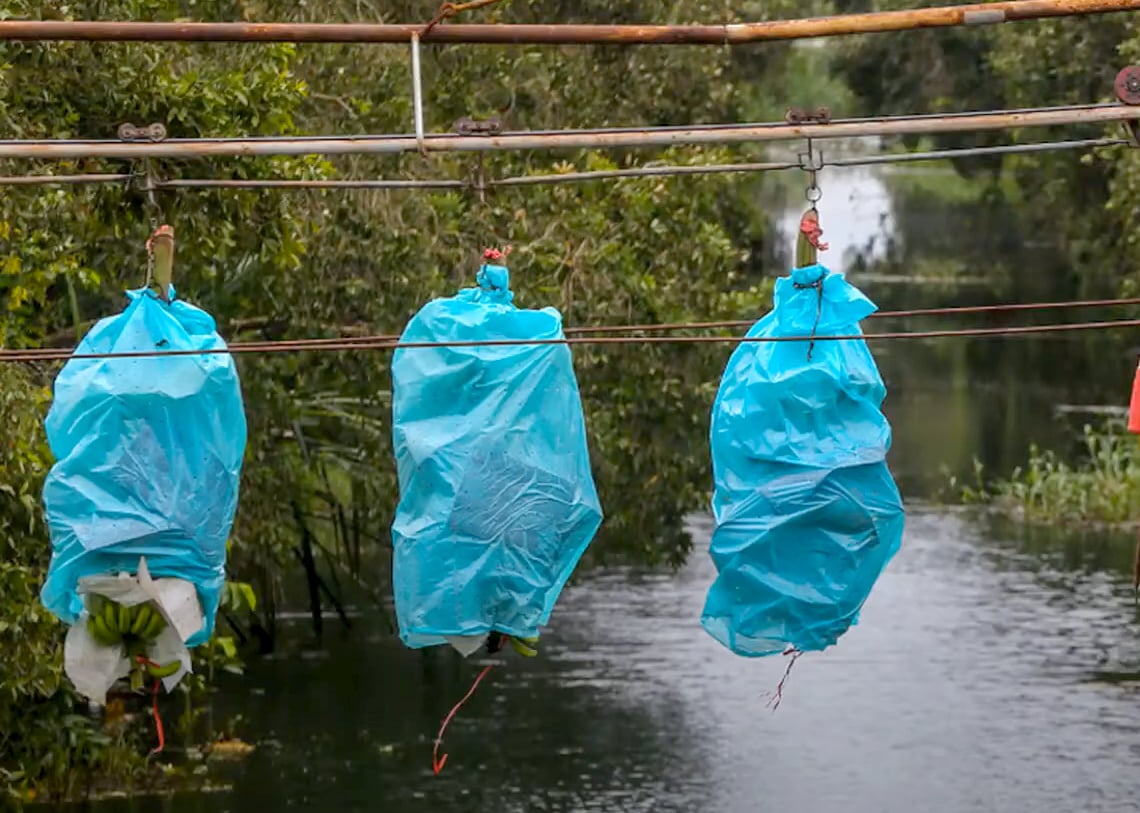November 26, 2025 | 16:13 GMT +7
November 26, 2025 | 16:13 GMT +7
Hotline: 0913.378.918
November 26, 2025 | 16:13 GMT +7
Hotline: 0913.378.918

Bananas grown on a farm belonging to Huy Long An Company in Duc Hue District, Long An province. Photo: Son Trang.
According to the Agency of Foreign Trade under the Ministry of Industry and Trade of Vietnam, Vietnamese banana exports to Japan are experiencing strong growth in 2023. The Customs and Tariff Bureau of Japan reported that Vietnamese banana exports to Japan reached 7.9 thousand tons in the first seven months of 2023, which is valued at 1.05 billion yen or 7.1 million USD. This is an increase of 62% in volume and 80.2% in value compared to the same period in 2022.
In addition to increasing banana imports from Vietnam, Japan has reduced its banana imports from the Philippines. Accordingly, nearly 485 thousand tons of Philippine bananas were imported into Japan in the first seven months of 2023, which is a decrease of 2% in volume compared to the same period in 2022.
Despite the decline, the Philippines remains as the main supplier of bananas to Japan, accounting for 79.8% of the latter's banana imports. Due to its geographical proximity to Japan, the transportation time from the Philippines to Japan is shorter compared to that of other supply sources. As a result, the Philippines has an advantage in managing the ripening and distribution process to meet the daily demands of Japanese retailers and consumers.
On the other hand, many Japanese importers are gravitating towards increasing their purchases of bananas from Vietnam. The Vietnamese Trade Office in Japan reported that several consumer systems in Japan are looking to import bananas from Vietnam as a replacement to Philippine products because many Japanese consumers prefer the taste of Vietnamese bananas.
In comparison to the Philippines, Vietnamese banana exports to Japan, although disadvantaged in terms of geographical proximity, benefit in terms of tariffs. Under the Philippines-Japan Economic Partnership Agreement (PJEPA), Philippine bananas imported into Japan are subject to an average annual tariff of 13%, ranging from a peak of 18% in the winter months to a minimum of 8% in the summer. The Philippines is the only Southeast Asian country which is subject to a high tariff level. Conversely, other suppliers in the region enjoy preferential tariffs when exporting to Japan. Most notably, Vietnam currently enjoys a 0% tariff rate for banana exports to Japan under the ASEAN-Japan Comprehensive Economic Partnership Agreement (AJCEP) which is effective from April 1, 2023. Vietnam was previously subject to a tariff rate of 3%.

Banana transportation on a farm in Long An province. Photo: Son Trang.
Several Vietnamese banana exporters have reported that Japanese importers are seeking to purchase organic products. According to Mr. Vo Quan Huy, Director of Huy Long An Company in Duc Hue District, Long An province, a number of Japanese importers have expressed interest in purchasing organic bananas from Vietnam in large quantities. However, Huy Long An Company has refrained from accepting these orders as there are several untreated diseases on the banana plants that cannot be effectively addressed using organic methods. Consequently, the company has not been able to organize organic-certified banana production on a large scale to meet the requirements of export orders to Japan and other demanding markets.
Although Vietnamese banana imports to Japan are growing rapidly, they still only account for 1.3% of the total banana imports into Japan in the first seven months of 2022. As a result, the Agency of Foreign Trade of Vietnam suggested that there are potentials for Vietnamese banana exporters to expand their market share in Japan. Vietnam is currently the fifth largest banana supplier to the Japanese market, following the Philippines, Ecuador, Mexico, and Guatemala. Among the top five largest suppliers to the Japanese market, Vietnam is experiencing the highest growth rate, followed by Guatemala. Conversely, Japan has reduced its imports from the remaining three countries in the first seven months of 2023.
Banana is currently one of Vietnam's most prominent export products. Namely, Vietnamese banana exports reached a turnover of 311 million USD in 2022, ranking third after dragon fruit at 632 million USD and longan at 420 million USD. In addition to Japan, Vietnamese bananas are exported to other markets around the world including China, South Korea, the European Union, and Malaysia.
Furthermore, bananas feature one of the largest production areas and yields in Vietnam. Accordingly, the total banana production area nationwide in 2021 was 154 thousand hectares, with a total yield of 2.3 million tons.
Translated by Nguyen Hai Long

(VAN) China’s cooking oil is suddenly flooding into India. It all comes down to a soybean surplus that Beijing doesn’t quite know what to do with.

(VAN) An Giang promotes supply-demand connections, standardizes quality and builds value chains, creating a foundation for sustainable bird’s nest development and aiming to expand exports.
/2025/11/24/5339-4-nongnghiep-075331.jpg)
(VAN) Recently, the conference on 'Sustainable Fisheries Linkage Chain - Tilapia for Export' took place in Tien Hai commune, Hung Yen province.
/2025/11/21/4309-2-153400_128.jpg)
(VAN) Green and low-emission rice is paving the way for Vietnamese rice to enter high-end markets, marking the beginning of a transformation journey toward greening and elevating the national rice brand.

(VAN) ‘Right to Win’ outlines a national action plan that shapes a new vision for Viet Nam’s agriculture in an era of renewal and global integration.

(VAN) Lam Dong’s farmed sturgeon output this year is expected to reach 2,300 tons, worth VND 450 billion, affirming the brand’s position on the market.

(VAN) A surge in Ukrainian egg exports, largely driven by soaring sales to the UK over the last few years, has notably pushed up egg prices on the domestic market.